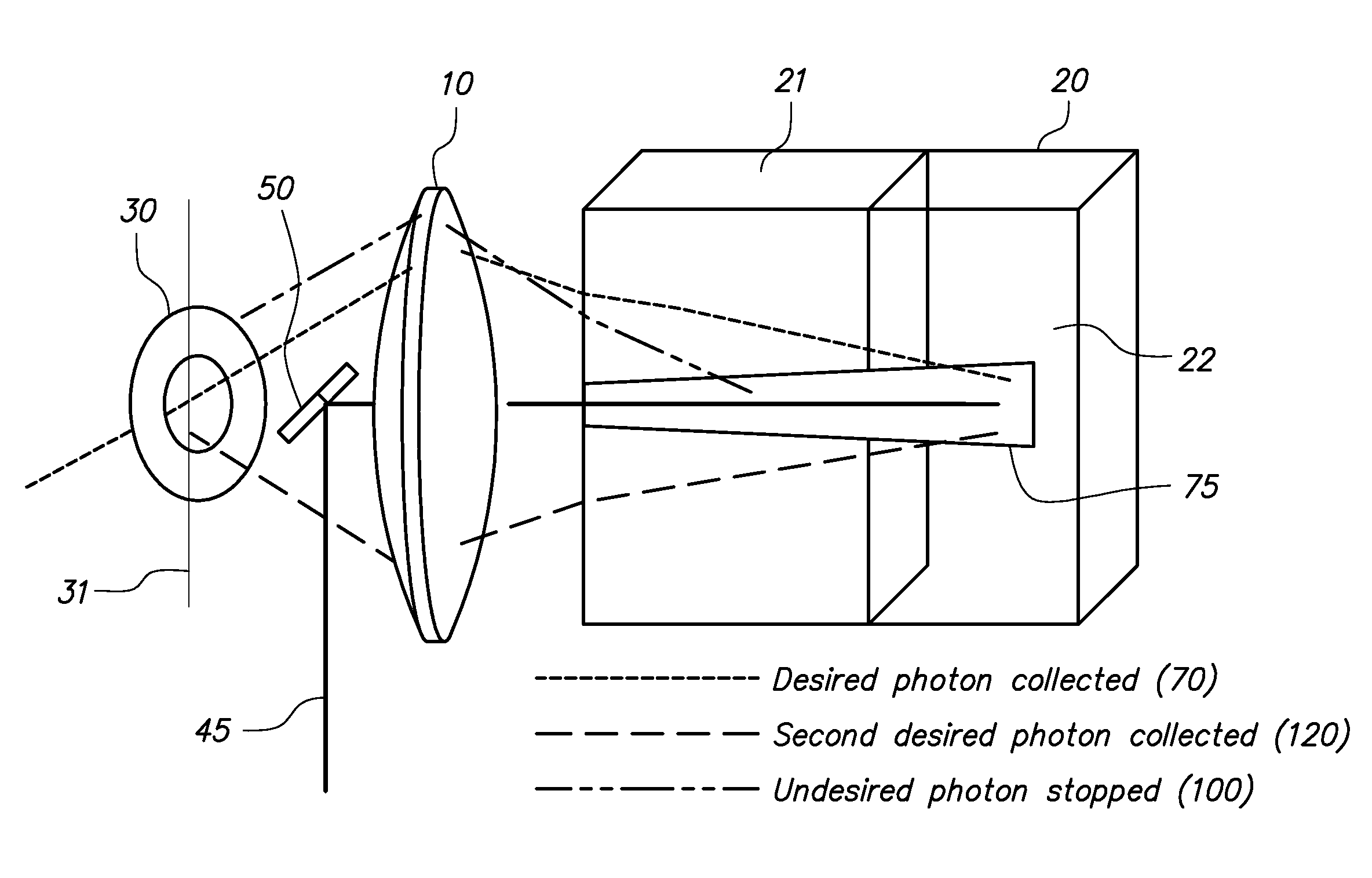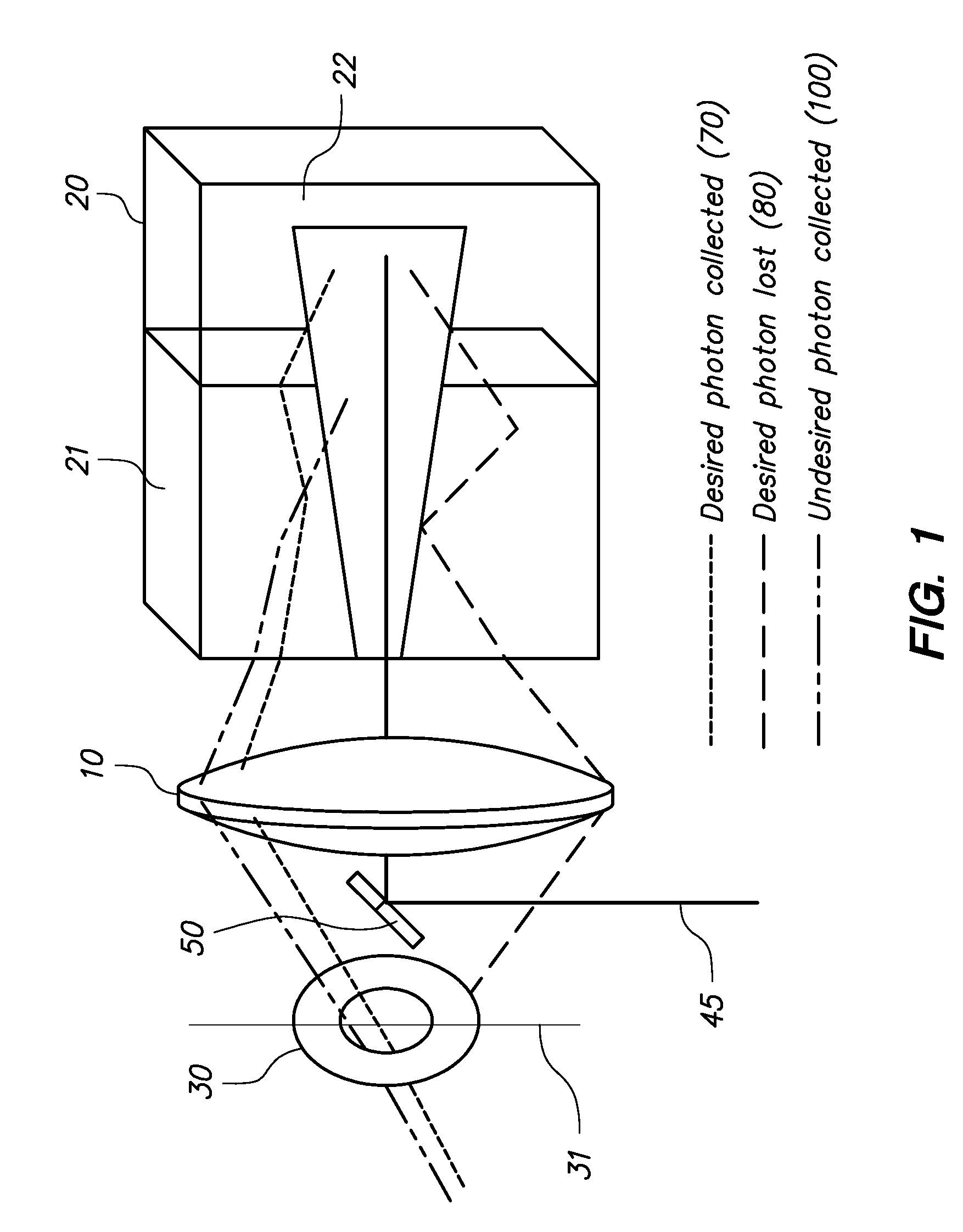Reduction in scattering from a turbid medium by photo-bleaching
a turbid medium and scattering technology, applied in the field of photobleaching, can solve the problems of insuperable difficulties of excessive elastic scattering, practical problems in spectroscopy, and apparatus is incapable of distinguishing angular deviations from wavelength deviations, so as to reduce scattering and reduce the absorption of incident radiation
- Summary
- Abstract
- Description
- Claims
- Application Information
AI Technical Summary
Benefits of technology
Problems solved by technology
Method used
Image
Examples
Embodiment Construction
[0021]In FIG. 1, a situation corresponding to the prior art is presented. The sample medium 20 in which a desired analyte is distributed is significantly turbid. This situation is considered analytically in, “Analytical Model for Extracting Intrinsic Fluorescence in Turbid Media,” Jun Wu, Michael S. Feld, and Richard P. Rava, Applied Optics, Vol. 32, No. 19, p. 3589 (Jul. 1, 1993), which is incorporated herein by reference. The scattering from such a medium has two deleterious effects. In one instance a photon generated in the region 22 where the analyte resides, and which is generated by the analyte is not collected 80 due to the excessive scattering in the medium 20. Also shown, is the collection of an undesired photon 100 which originates from depths where the desired analyte is not present 21, and which is nevertheless collected. In the absence of scattering, it would be possible to focus the lens 10 on the desired region 22, and photons originating at positions far from the foc...
PUM
| Property | Measurement | Unit |
|---|---|---|
| wavenumbers | aaaaa | aaaaa |
| diameter | aaaaa | aaaaa |
| depths | aaaaa | aaaaa |
Abstract
Description
Claims
Application Information
 Login to View More
Login to View More - R&D
- Intellectual Property
- Life Sciences
- Materials
- Tech Scout
- Unparalleled Data Quality
- Higher Quality Content
- 60% Fewer Hallucinations
Browse by: Latest US Patents, China's latest patents, Technical Efficacy Thesaurus, Application Domain, Technology Topic, Popular Technical Reports.
© 2025 PatSnap. All rights reserved.Legal|Privacy policy|Modern Slavery Act Transparency Statement|Sitemap|About US| Contact US: help@patsnap.com



